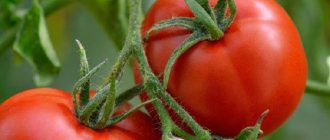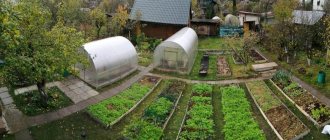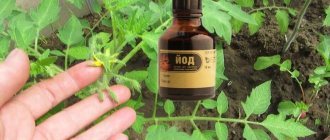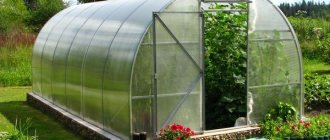Feeding tomatoes in a greenhouse is an important stage in caring for the crop. To carry it out correctly, it is necessary to study the need of tomatoes for certain substances, the influence of elements on the development of the bush, and find out which fertilizers for tomatoes in a greenhouse are considered the best. Correct use of information about fertilizing will allow you to get a high yield in a small greenhouse area.
What substances do greenhouse tomatoes need?
Greenhouse growing of tomatoes has its own specifics. To get the expected result, it is necessary to provide the plants with adequate nutrition. They do this by applying fertilizing. The basics of proper feeding of tomatoes in a greenhouse are a balanced composition and timeliness. The growth and development of tomatoes, productivity, and disease resistance depend on the quality composition of the solutions and compliance with the schedule. Gardeners know that basic macroelements (nitrogen, phosphorus and potassium) are needed by plants regardless of the growing method. In addition to these components, greenhouse tomatoes need a whole list of microelements. To find out what fertilizers tomatoes need in a greenhouse, you need to familiarize yourself with the list of elements that are essential for the crop. The NPK group, familiar to vegetable growers, has a powerful effect on nightshades:
- Nitrogen. It is necessary for tomatoes to form greenery or above-ground parts. Its quantity must be strictly controlled. If you overdose a component using fertilizing, the plant will devote a lot of energy to the development of foliage, lateral stems or shoots. Excessive formation of tops leads to a significant decrease in yield. The lack of nitrogen leads to shredding of leaves and poor growth of tops.
- Phosphorus. This element in greenhouse beds is responsible for the formation of the root system, as well as the process of fruiting of tomatoes. If fertilizing contains a sufficient amount of phosphorus for the plant, then fruit formation occurs quickly, immunity improves, and resistance to disease or pest attacks increases. Excessive amounts of phosphorus lead to zinc deficiency; it inhibits the absorption of this element by the crop.
- Potassium. Plays an important role in developing the resistance of tomatoes to temperature changes or climate changes, and improving the quality of fruits. For greenhouse conditions, it has one more property - the fruits become more resistant to fungal infections.
This is a list of the main macroelements, without which fertilizing greenhouse tomatoes becomes of little use. Macroelements are closely interrelated, the absence of one of them immediately affects the development of tomatoes - the formation of the above-ground part, the timing of fruiting, yield, and quality of fruits.
However, this list is far from complete. In addition to the elements of the NPK group, tomatoes require additional microelements. The absence of one of them does not have such a strong effect on the general condition of the plant, but it does have a negative effect. Among the main ones, it should be noted:
- Bor. Responsible for fruit set, enzyme synthesis, and is used in the treatment of diseases. Therefore, timely application of fertilizing with boron strengthens the immunity of greenhouse tomatoes.
- Manganese. Necessary for the normal course of photosynthesis processes. If a microelement is missing in the nutrition of tomatoes, this affects the condition of the leaf blades. They become covered with dry spots and die.
- Zinc. Plays an important role in metabolism and biosynthesis of vitamins.
- Magnesium. Without this microelement, intensive formation of chlorophyll does not occur, so it is added with fertilizing constantly throughout the entire growing season, but in small doses.
- Calcium. Participates in plant metabolism. Many gardeners equate its effect with the effect of macroelements, but this is an exaggerated opinion.
- Sulfur. Without this microelement, the transport of nutrients inside tomatoes becomes very difficult, and the synthesis of proteins and amino acids is reduced.
- Molybdenum. Without it, the plant does not fix air nitrogen, and control over the process of macronutrient exchange is reduced.
It cannot be said that the listed substances contain only mineral fertilizers for tomatoes in a greenhouse. Organic formulations also contain a large number of necessary elements. Therefore, fertilizing with organic and mineral complexes is needed. Greenhouse tomatoes pull more nitrogen and potassium from the soil, but phosphorus is needed to improve taste and increase large fruit size.
What to feed to make them plump
Why do gardeners hope that as they grow, tomato bushes will become strong and plump? Yes, because such plants give a more generous harvest. Thick stems provide adequate nutrition to the fruits and do not break off under the weight of ripe vegetables. The aspirations of gardeners are not always justified in themselves. Tomatoes often need to be helped by feeding.
If you also encounter this problem, try one of the recipes below:
- You need to mix 500 g of chicken manure, 500 g of wood ash, 1 glass of sugar, 10 g of dry yeast and pour the ingredients into 10 liters of water. Before use, the mixture must be properly fermented.
- Tomatoes must be fed in a timely manner to avoid thinning of the stems. The bushes will be strong if they are fed with calcium nitrate or urea in the early stages of growth, using 30 grams of fertilizer per 10 liters of water.
- You can give tomatoes a large dose of potassium using banana peel tincture. The peels of 4 bananas are placed in a three-liter jar and filled with warm water. The fertilizer should infuse for 3 days in a dark, cool place. After this period, fertilizing is used for watering at the root to strengthen the stems.
It is necessary to monitor the condition of the plants even at the seedling stage, because it is at this time that the tomatoes begin to stretch. In addition to self-prepared fertilizers, you can use industrial preparations, for example, “Athlete” or “Stop Growth”. Both products promote enhanced root growth while simultaneously stopping the growth of the vegetative part.
The growth stimulator “Etamon” has proven itself well when growing tomato seedlings. After using it, the bushes become lush, beautiful, strong, and develop roots well.
To prevent seedlings from stretching out due to a lack of important microelements, they are fed 2 weeks after picking with one of the complex mineral fertilizers:
- "Agricola";
- "Baby";
- "Strong";
- "Emerald";
- "Fertika Lux";
- "Ideal";
- "Solution";
- "Ferovit".
After another 2 weeks, fertilizing is repeated.
If you did everything correctly at this stage, then by the time you transplant them into the ground, the tomato bushes will be strong and healthy, with thick stems and emerald leaves.
How to determine nutritional deficiency in tomatoes
The main activity of a vegetable grower should be observation. Regular inspection of tomatoes planted in the greenhouse area will allow you to notice the problem in time and carry out fertilizing. A deficiency of any element is manifested by certain symptoms, upon noticing which it is necessary to take measures to correct the situation. This is what a tomato looks like when it is deficient:
- Nitrogen. The main indicator for fertilizing with nitrogen is the spread of chlorosis. Leaf blades become thinner and their growth slows down. The veins take on a light red tint. Old leaves change color from dark green to pale green. Acute nitrogen deficiency is manifested by a yellowish-white color of the leaves. Young leaves stop growing and branching activity decreases. The stems become hard and fibrous and dark red in color. The presence of the listed symptoms requires the application of fertilizing - urea, potassium nitrate, ammonium sulfate or ammonium nitrate.
- Phosphorus. An important symptom is the appearance of necrotic spots on tomato leaves. These dead areas are often confused with signs of disease. An additional sign of element deficiency will be short stature, poor development of tomatoes, the appearance of brown spots and red-violet veins on the underside of the leaf. You need to compare the plants with other tomatoes that grow in the greenhouse area. Fertilizing with the addition of double or single superphosphate, potassium monophosphate or ammonium monophosphate will help change the condition of the crop.
- Potassium. The element is very quickly washed out of the soil; its deficiency reduces the resistance of tomatoes to diseases and pest attacks. Externally, the plants look sick and weak. The main sign of the need for potassium fertilizers is necrosis of the edges of the leaves, which resembles a burn. If the potassium deficiency is not replenished with the help of fertilizing, then the “burnt” area spreads not only to the entire leaf blade, but also to other parts of the tomatoes. The affected organs become bright orange, the fruits do not ripen. Along the way, chlorosis develops. In this case, it has an irreversible process. Fertilizing with wood or vegetable ash mixed with compost (0.5 liters of ash per 10 liters of compost) helps to compensate for the lack of potassium.
- Calcium. In tomatoes, with a lack of calcium, the base of the leaves is affected by chlorosis. Along the way, there is a tendency to wilt, spots of rot on the top or base of the fruit. Then yellowing of the lower leaves occurs. If such symptoms are detected, it is necessary to carry out foliar feeding with an aqueous solution of calcium nitrate (20 g per 10 l).
- Magnesium. Characteristic signs of magnesium deficiency on tomato bushes appear in the form of interveinal chlorosis and further tissue necrosis. If the lack of an element becomes critical, then the condition of the tomatoes resembles the symptoms of potassium deficiency.
- Sulfur. This rare element is constantly needed by tomatoes in greenhouse areas. If the concentration of sulfur in the soil decreases, the base of the leaf and the veins become reddish, and the leaf plates turn yellow. True, it is more uniform than with chlorosis from nitrogen starvation and affects young leaves. The main symptom of sulfur deficiency is a pale pink tint on the underside of the leaves near the petiole; the advanced stage is characterized by necrotic lesions of the petiole. You can get rid of the problem by fertilizing - adding an aqueous solution of magnesium sulfate (1 g per 1 l).
- Manganese. A very difficult tomato problem to recognize. The external characteristics of the leaves practically do not change. If you look closely, you can see the beginning of interveinal chlorosis in small areas of tomato leaf blades. The second sign is an intensification of the vein pattern. When the initial stage is missed and treatment is not started on time, a metallic sheen appears on the leaves and necrotic areas along the veins. Foliar feeding helps - spraying with a solution (0.25%) of manganese sulfate or potassium permanganate.
- Molybdenum. The first and second pair of leaves on greenhouse tomatoes begin to curl and turn yellow. Chlorosis develops on young shoots and they also curl. The upper part of the leaf blades is covered with mottled secretions reminiscent of rust. The lower part remains unchanged. The deficiency of the element can be replenished by fertilizing with a solution of ammonium molybdate (1.5 g per 10 liters of water). An overdose of molybdenum appears on the leaves with a brilliant orange color.
- Gland. Chlorosis begins to develop, affecting the bases of stems and leaves. This phenomenon occurs during greenhouse cultivation on calcareous soils. The whitened areas then degenerate, and necrotic spots form in their place. Foliar spraying with a solution of iron sulfate (0.25%) will help restore tomatoes to health.
- Bora. Tomatoes are very picky about the amount of boron. The culture immediately reacts to a shortage or overdose of an element. You can notice boron deficiency in young tomatoes at the reproduction stage. Old plants are signaled by the appearance of yellow-orange interveinal chlorosis. The stems and foliage become brittle, and an area of dead tissue forms on the fruit (top part). It is necessary to fertilize and spray the tomatoes in the greenhouse with a solution of boric acid (5 g per 10 l).
- Copper. The leaves curl and the petioles bend toward the ground. Cell turgor decreases and leaf chlorosis develops. Some leaves bend strongly downwards and necrotic areas appear on them. The lack of copper is compensated by adding solutions of copper sulfate (20 g per 10 l of water) or copper sulfate (2 g per 10 l of water).
Attention! The conclusion that can be drawn from the information listed is that the primary manifestation of nitrogen, zinc, phosphorus, magnesium and potassium deficiency occurs in the lower sections of tomatoes.
Tomato seedlings
Obtaining, selection and disinfection of seeds
Seeds for seedlings can be bought at the store. It is necessary to choose well-proven, zoned varieties that have genetic characteristics that are stably passed on from generation to generation.
For example, the following varieties are suitable for growing tomatoes in open ground in the middle zone:
- “Verlioka”, “Katya”, “Arctic”, “Native”, “Nevsky”, “Yamal”, “Far North”, “Apples in the Snow”. They are also recommended for greenhouse cultivation in the northern regions of the country.
For the southern regions there is more choice. Here you can plant nightshades with a long growing season and a larger fruit mass of the final product. This:
- “Fifty”, “Taman”, “Salad Pink”, “High-Peel”, “Shiva”, etc. .
Another way to obtain seeds is to get them from your garden. For this, strong, ripe tomatoes are selected (it is better to let them ripen on the bush, without ripening) and kept on the windowsill until they become soft (rotting should not be allowed). The prepared tomato is cut in half, the seeds are squeezed into a jar and fermented. To do this, they should be left in the jar for 2-4 days. High-quality seeds will separate from the pulp and settle to the bottom. The process can be considered complete when the resulting substance begins to release gas bubbles. The last step is washing the seeds with clean water. After this, they are dried and stored in a cool (but not cold) room.
Selection of planting material
Before planting, you should sort the seeds by placing them in a glass of water for 10 minutes and stirring with a wooden stick. Seed material suitable for planting will sink to the bottom, while lightweight specimens will remain on the surface.
Some sources advise warming up tomato seeds before planting to ensure vigorous germination. The benefit of this procedure is questionable, because heating the seeds at high temperatures can deplete the supply of moisture they contain.
How to “treat” tomato seeds?
Previously, for this purpose, a solution of potassium permanganate (1 g per 0.5 cup of water) was most often used, in which the seeds were kept for 20 minutes, and then thoroughly washed with water. But now the KMnO₄ drug has practically disappeared from sale, and gardeners are using other methods to disinfect seeds:
- For example, aloe juice, into which tomato seeds are placed for one day, and then left to dry without washing.
“Treatment” is necessary, because even the best fertilizers for tomatoes will not help to get a good harvest from diseased plants, and after such treatment, adult bushes are practically not affected by anything.
Soak
The following preparations for stimulating seed germination have become the most popular among amateur gardeners : Epin, Zircon and Guamat . They are good not only because they act as growth catalysts for growing tomatoes, feeding their seeds with useful microelements, but they are also environmentally friendly fertilizers of organic origin.
The soaking temperature in these preparations should not be lower than 15°, otherwise the effect of the elements on the seeds will be incomplete. It is best to use a solution with t = 20-22 °C.
But it is strictly forbidden to soak tomato seeds in an ash solution . This useful fertilizer will be useful in the next stages of plant growth and development. Now it will have a depressing effect due to the presence of mineral salts in it. Potash fertilizers for tomatoes are not used at this stage for the same reason.
Tomato seeds need an average of 18 hours to swell. After this, they are taken out of the water so that they do not suffocate, since during germination they begin to need oxygen.
Germination of seeds
This procedure is simple and quite fast. It is best to place the seed material in well-ironed gauze, which can be moistened with water or a diluted growth stimulant (Epin, for example). They germinate within 1-2 days, the most important thing is not to miss this moment, otherwise roots will grow that will dig into the tissue and get stuck there.
Growing seedlings
It is necessary to attend to this issue in central Russia at the beginning of March. In the northern regions, at this time, seedlings are planted for subsequent transplantation into greenhouses. In the southern regions it is planted in April, sometimes even in May. But here there is no fundamental need for it; you can plant nightshade seeds directly into the ground.
Applying fertilizers before planting
This stage includes preparing greenhouse soil and fertilizing tomato seedlings. Gardeners begin preparing the soil in the fall:
- remove the layer completely;
- lay sawdust, pine needles or straw in a layer of 5 cm;
- on top - a layer of manure (10 cm);
- then the removed layer with the addition of fertilizers.
For 1 cu. m of soil add wood ash (3 kg), superphosphate (3 kg), ammonium nitrate (0.8 kg). 2 weeks before planting seedlings add 1 square meter. m area 0.5 buckets of humus and 1 glass of wood ash.
The seedlings are fed for the first time 14 days after picking. For this stage, a complex mineral fertilizer (NPK complex) is used to provide the tomatoes with the entire list of useful components. Seedlings also need microelements.
Important! You need a chelated form of microelements, not a sulfate form.
Video about feeding tomatoes in a greenhouse with microelements:
If tomato seedlings develop poorly and grow poorly, then repeat the feeding after 10 days.
“Moving” seedlings to the garden
Tomato bushes ready for planting should have a first cluster with ovaries and a second, flowering cluster.
They should not be planted directly into the garden bed. You must first harden the plants; this is one of the main conditions for growing tomatoes in open ground. It is advisable to start on a cloudy day by placing the pots with plants outside for 15-20 minutes, increasing your time outdoors every day.
There is another way (if you come to the dacha for one day with the goal of planting seedlings in open ground) - cover the plants with plastic bottles or plastic buckets. To do this, take a bottle with a volume of 5 liters or more and cut off the bottom. It is installed above the tomato bush in such a way that there is a gap at one edge between its lower cut and the soil for air circulation.
Diagram: example of arrangement of tomato bushes in a garden bed
Scheme and schedule for feeding tomatoes in a greenhouse
When growing tomatoes in a greenhouse, it is necessary to strictly adhere to the schedule and dosage of adding nutrients. The greenhouse space creates certain conditions for plants, so they need to be provided with the most comfortable conditions. Feeding is applied at important stages of development, taking into account the condition of the bush. The composition of the nutritional mixture is adjusted if necessary. The main phases during which it is time to fertilize tomatoes:
- after disembarkation;
- during flowering;
- after the appearance of the ovaries;
- during fruiting.
Tomatoes require a variety of nutrients when grown in a greenhouse. Therefore, when feeding tomatoes in a polycarbonate greenhouse, both mineral compounds and organic fertilizers are used. It is optimal to adhere to a certain feeding scheme that takes into account the development phases of tomatoes.
After disembarkation
Planting tomatoes in greenhouse beds is stressful. Therefore, the best way to fertilize tomatoes in a greenhouse after planting is “green manure.” Prepared as an infusion of crushed herbs.
Important! Plants that emit hazardous substances should not be used.
These include hemlock, ragweed, and other weeds. Plantain, nettle, dandelion, wheatgrass are suitable. The infusion takes 2 weeks to prepare, so you should add the herbs for fermentation in advance. The second option is to mix the grass with mullein and ash and let it brew for 48 hours. Before watering, dilute the tomato with water (1:8), the consumption rate is 2 liters per plant.
During flowering
Fertilizers for tomatoes in a greenhouse during flowering must contain potassium and phosphorus. Nitrogen fertilizers are prohibited for this phase of tomato development. Otherwise, stimulation of green mass will lead to a decrease in the flowering process. Tomatoes are best fed with yeast or boric acid. This is a budget option for a greenhouse. A solution is prepared from 10 g of boric acid and 10 liters of hot water. The liquid should not boil. Spray the tomatoes with the cooled solution. Consumption of working solution – 100 ml per 1 sq. m of greenhouse area.
Yeast dressing is prepared from 10 g of yeast, 2 tbsp. l. sugar, water. Mix sugar with yeast, leave for 2 hours, dilute with water (warm) in a ratio of 1:10. Water 0.5 liters per bush. You can use mineral phosphate and potassium fertilizers according to the instructions.
After the ovaries appear
The ovaries on tomatoes do not appear all at once; they form as the stem grows. Therefore, feeding alone is not enough. 2 weeks after spraying, during flowering, potassium fertilizing should be repeated. After 7 days, you need to add calcium nitrate to improve the delivery of nutrients to all parts of the tomato. The ratio of components is 20 g of the substance per 10 liters of water for root feeding and 15 g per 10 liters of water for foliar feeding.
During fruiting
Feeding during this period is aimed at improving the taste of the fruit, accelerating ripening and increasing yield. Most often, vegetable growers use root fertilizers for tomatoes in a greenhouse with:
- Nitrophoska. You will need to mix 2 tsp. dry sodium humate, 2 tbsp. l. nitrophoska and 20 liters of water. Consumption 5 l per 1 sq. m at the root.
- Superphosphate. Take 1 tbsp. l. superphosphate powder, 1 tsp. liquid sodium humate, 5 liters of water. Apply 5 liters of solution per 1 square meter using the root method. m of greenhouse area.
- Ash. Dilute 50 g of wood ash with 2.5 liters of hot water, leave for 5 hours, strain. Re-dilute with warm water in a ratio of 1:3. Pour 0.5 liters under the root.
If you use mullein, you need to include a mineral complex in the fertilizing composition.
Ready-made fertilizers, the choice of gardeners
On many forums dedicated to gardening, you can find many real reviews about the effectiveness of ready-made complexes and fertilizers that contribute to improved yields and good growth of tomatoes. The list of the most effective among summer residents includes:
- Hello Turbo;
- Agricola;
- Baby;
- OrganicMix;
- Sudarushka Tomato;
- Agros complex fertilizer;
- Kelik Kaliy
- Vegetable;
- Bio tomatoes;
- Blank sheet for tomatoes and peppers;
- OMU for tomatoes, peppers and eggplants;
- MultiFlor;
- Tomato;
- Orton-seedling;
- Master;
- Bud;
- Tomatoes-peppers;
- Grow up;
- Ammophos.
It is not recommended to use ready-made formulations every time. Fertilizer complexes should be alternated, swapping organic matter and nitrogen fertilizing. The intervals between adding nutrients should be 15-20 days. To avoid harming the plants, the preparations should be diluted according to the manufacturer’s instructions. The volume of watering should not exceed 150-200 ml in combination with water per bush.
Foliar feeding
By spraying, microelements are added to the tomatoes - copper, iron, iodine. It is best to use ready-made mixtures for the greenhouse, complexes for tomatoes Bio Master, BioHumus, Clean Sheet, Red Giant. The drugs are equipped with instructions for use with a detailed explanation. It is not recommended to overuse foliar sprays. They are used in bad weather, for example, when the temperature drops to + 10-13 °C. With such a decrease, the roots do not absorb nutrition from the soil well. In other cases, it is better to give preference to root watering.
Complex means
Modern specialized stores can offer fertilizers that satisfy any need .
Information on methods of use and required dosages can be found in the instructions for each drug or obtained from a store sales consultant.
- Often, experienced gardeners purchase complex fertilizers from the “Kristalon” series, which contain various micro- and macroelements that have a general strengthening effect on plants. These fertilizers are water-soluble, which makes them easy to use, and can replace manure, ammonium nitrate, and urea. The action of this drug has a long-lasting effect: the active substances, when released into the soil, remain in it for 2 - 3 years. Does not pose an environmental hazard.
The Kemira mineral complex, developed in Finland and licensed to be produced in Russia, has recently enjoyed particular popularity. The complex contains all the necessary nutrients and microelements (nitrogen, phosphorus, potassium, magnesium, manganese, zinc and others). The granular fertilizer substance is packaged in sachets, with the weight indicated, which is very convenient when applying solutions. It is also found in liquid form. Does not contain chlorine.- The Effekton fertilizer, which is a natural substrate consisting of peat and mineral additives, is recognized as environmentally friendly and biologically active. “Effecton” improves the soil, promotes the development of beneficial microflora and is a stimulator of root growth. Some researchers say that this fertilizer helps reduce the level of radionuclides and carcinogens in the soil.
Read more about how to choose a complex fertilizer for tomatoes here.
Folk remedies for feeding tomatoes in a greenhouse
When there is a sharp increase in temperature in the greenhouse, barren flowers form on the tomatoes. Treatment with iodine will help:
- iodine – 3 drops;
- water – 1 l;
- whey – 3 tbsp. l.;
- hydrogen peroxide – 1 tsp.
Spray the tomatoes. The composition is designed for 35-40 bushes. A mixture of 4 drops of an alcohol solution of iodine and 10 liters of water protects tomatoes in a greenhouse from late blight. 2 liters of composition are consumed for 1 bush.
An infusion of chicken manure works well in greenhouse beds. It contains a lot of phosphorus and nitrogen. First you need to infuse chicken manure for 7-10 days. To do this, fill a bucket (10 l) 1/3 full with droppings, add water to the top of the bucket. After steeping, dilute again. For 10 liters of water, take 0.5 liters of infusion, pour over the tomatoes at the rate of 5 liters per 1 square meter. m area.
Feeding tricks to achieve specific goals
To keep the tomatoes plump , it is recommended to feed them with nitrogen or nitrogen-calcium fertilizers two weeks after planting the seedlings in open ground or a greenhouse, or when 2-3 true leaves appear after sowing in a permanent place. For example, you can fertilize with the following preparations: urea (urea), ammonium nitrate, calcium nitrate, herbal infusion, infusion of chicken manure, mullein.
To make the plants stronger , stronger, for better growth and development, it is recommended to feed the tomatoes with yeast . It is better to do this one or two weeks after planting in the soil. Regular baker's yeast will do. To prepare the infusion, you need to follow a simple recipe: dilute 100 grams of dry product in 10 liters of warm water, add 2 tablespoons of sugar, mix well, leave for 2 weeks in a warm place, stirring regularly. Then, before use, you should dilute the yeast fertilizer 1 to 5.
To have more ovaries with boron during flowering (for example, boric acid in powder form (5 g per bucket of water), Boroplus, Borofoska). It is best to do foliar feeding (i.e. spraying), but you can also water at the root.
To prevent blossom end rot , it is recommended to fertilize the plants with calcium preparations (both root and foliar feeding can be done). For example, you can use calcium nitrate, but it is better to feed tomatoes before flowering or after fruit set.
In order for the tomato crop to ripen faster , it is recommended to apply potassium fertilizers . For example, infusion of wood ash, potassium nitrate, potassium magnesium, potassium monophosphate.
In order to properly care for any vegetable crop in a dacha or area of a private house, you need to put in a lot of effort. But it is also important to know the nuances, features, and necessary procedures. If you do everything correctly throughout the season (including adding nutrients), you can get a rich, tasty and good harvest!
Tips and tricks from experienced farmers
To ensure that tomatoes grow and bear fruit well, follow the recommendations of experienced farmers :
- Do not plant tomatoes in soil that is too fertilized with organic matter.
- Carry out the first feeding of tomatoes planted in the ground in early June.
- It is not recommended to use manure to fertilize tomatoes more than 2 times per season.
- The best fertilizer for seedlings is any liquid organic fertilizer (example: vermicompost). It is diluted according to the instructions, a little ash is added, and then the plant is watered with the solution.
- If plants need emergency help, then foliar feeding is a way to quickly receive nutrients.











